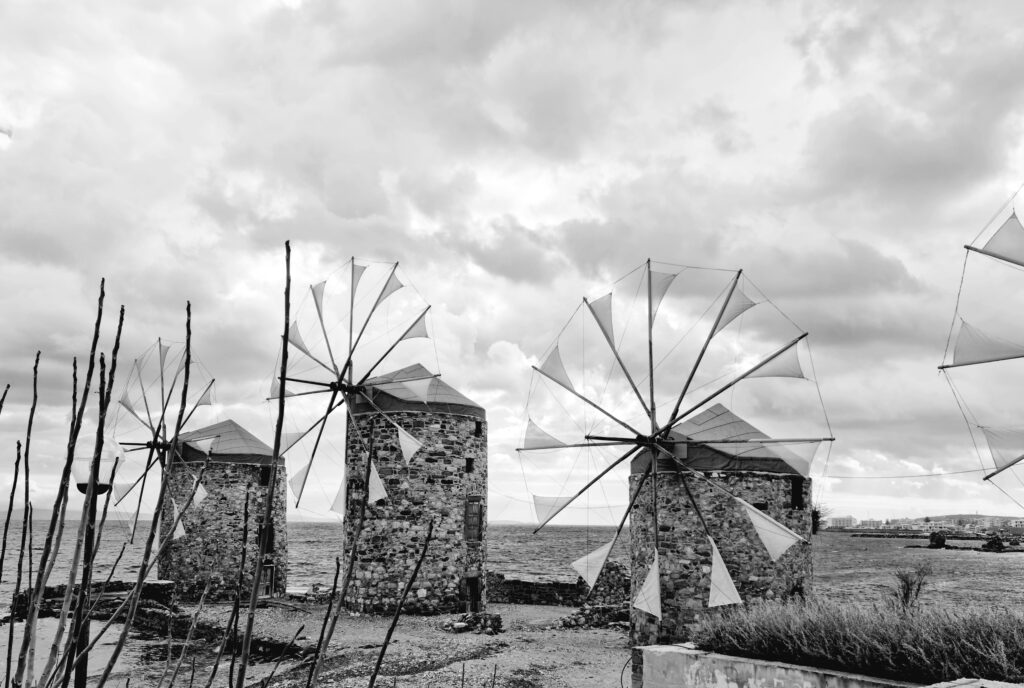The Maritime Legacy of Chios Island
Chios is the fifth largest island in Greece (on the map). Its strategic position near the coast of Asia Minor, almost opposite Izmir and on the crossroads to the Black Sea, but mainly the restless spirit and the abilities and skills of its inhabitants over the centuries make it an important piece in the puzzle of world maritime history.
Since antiquity, its navy has flourished, since with 100 ships the Chians faced the Persian fleet in the Battle of Lade, in 494 BC, as allies of the Athenians during the Persian Wars. In the Peloponnesian War that followed, however, the Chians allied with the Lacedaemonians. The presence of the Chian fleet in the naval battles of ancient times is considered essential, since they are the largest naval power in Greece at the time.
In Byzantine times. Chios granted the Empire timber for the construction of its fleet. Anna Komnene refers to Chios as “The maritime place of the Aegean”.
Then followed the Genoese Rule, the domination by the Genoese, a time when the shipping of the island and shipbuilding reached their greatest prosperity. In the 13th century, Chios became a transit trading station of the Eastern Mediterranean and Egypt. At the same time it was a commercial center for many European states, with many representatives of these countries having settled on the island to carry out their commercial interests. The Dynasty of the Giustiniani family strengthens the dynamic naval course of the island by founding “Maona”, the first joint stock company of colonial type in history.The company was responsible for the trade of silk, mastic and citrus fruits produced by Chios.

In 1453, under the leadership of John Giustiniani, 300 Chians with their fleet defended Constantinople, which after long resistance fell into the hands of the Ottoman conquerors.
In 1474 the Genoese Christopher Columbus arrives on the island of Chios. He stays on the island for two years, studying the nautical experience of Chian sailors, the methods they practice in navigation and asks the knowledgeable and experienced Chians to make maps for his long journey.
During the years of Turkish Rule since 1566, the Chians managed to maintain their power in trade and shipping, having gained special privileges compared to the rest of the Greeks. In the 18th century It is a solid maritime force with 150 small vessels. On the island there are “Maritime Courts” to resolve maritime issues and the “Maritime class” is the distinguished social class of wealthy Chian sailors.
The Greek Revolution followed in 1821, with the active participation of the Chians leading to the Massacre and destruction of Chios in 1822 and then the catastrophic earthquake of 1881 that demolished the island almost completely.

The first steam boat of iron construction was created in 1850 by the Margaroni family.Families from Vrontados, Kardamyla and the island complex of Oinousses buy boats, while captains and crews participate in the business. The spectacular maritime rebirth of Chios took place after 1921, when Chian families of London developed a naval force of global scale. Among them the families of Stavros Livanos, Kostas Michalos, Michalinos, Lemos, Pateras, Lyras, Tsakos, Los, Fafalios, Frangous, Angelikoussis, and others while the family of Ioannis Chandris sets up its business in Piraeus.
After the Second World War, the headquarters of operations were transferred from London to New York, and the concession by the US government of 100 liberty brought Chian shipping to its peak.
Since then, Chian shipping companies dominate the world and evolve year by year.
The 2/3 of the economy of the island of Chios until today is based on shipping and its sailors.
In 2020, Lloyd’s list of the top 100 global shipping personalities includes twelve Greeks, seven of whom are of Chian origin.
On the island today operate a Merchant Marine Academy, a Department of University of Maritime Education, a Public and Private Maritime High School (from the Panagiotis Tsakos family), as well as institutions for the promotion of maritime issues and maritime research that mark the bright future of the maritime history of Chios.
The term “Afanis Naftis” (Ἀφανής Ναύτης) in the above photo can be translated from Greek as “Invisible Sailor” or “Unknown Sailor.” It often refers to sailors who have been lost at sea, with their fates unknown, symbolizing the countless seafarers who disappeared during voyages and whose stories remain untold. The term may also be used to honor and remember those who contributed to maritime history but whose individual names are lost to time.

by Katerina Konstanta
Katerina Konstanta is enrolled in the Advance Certificate of Maritime Busness MAREVA.This article is one of the final stage tasks she completes during the final stage of the course. She lives and works at Chios island.














